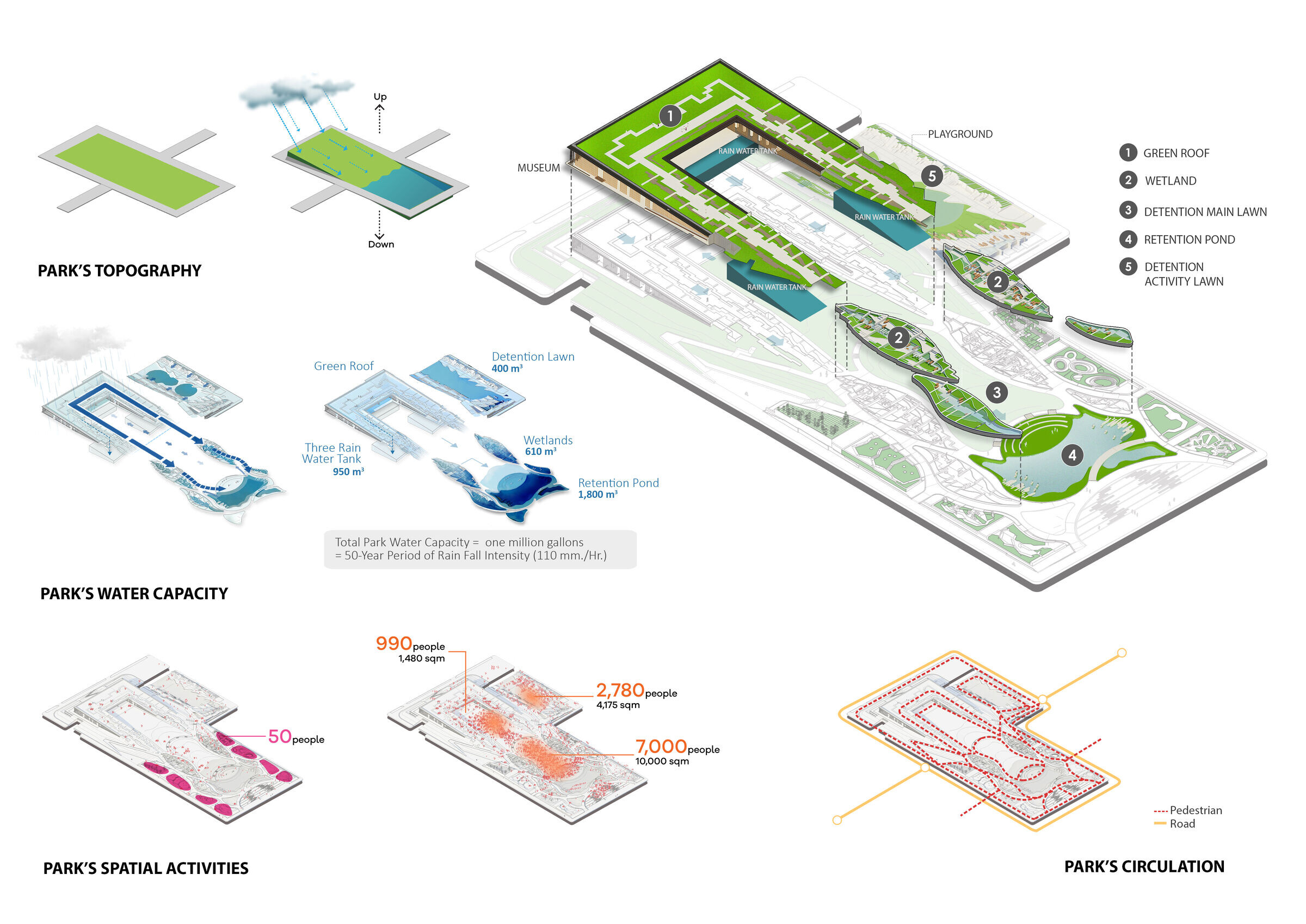As our constantly-fluctuating climate causes rising sea levels, storm surges, and unexpectedly heavy rainfall, low-lying cities across the globe are bracing for urban flooding disaster. As concrete infrastructure multiplies, Bangkok is sinking two centimeters every year.
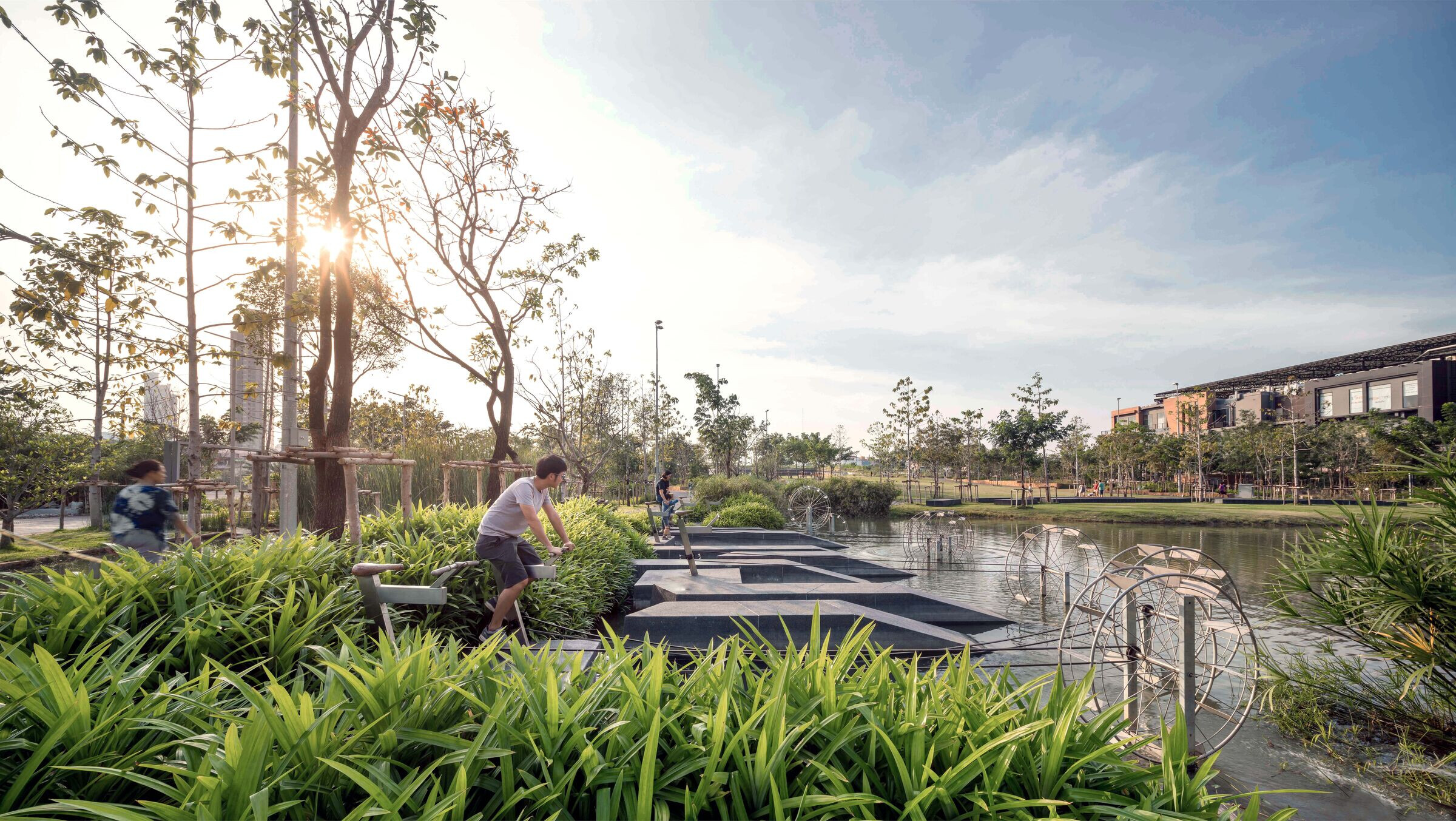
For the first time in 30 years of rapid urban development, an invaluable property at the heart of Bangkok—11 acres of land and 1.3 kilometers avenue — was not turned into another commercial use. Instead, it is transformed into a public park. Opened in 2017, Chulalongkorn Centenary Park is the first critical piece of green infrastructure in Bangkok to mitigate detrimental ecological issues and reduce urban flood disaster risk.
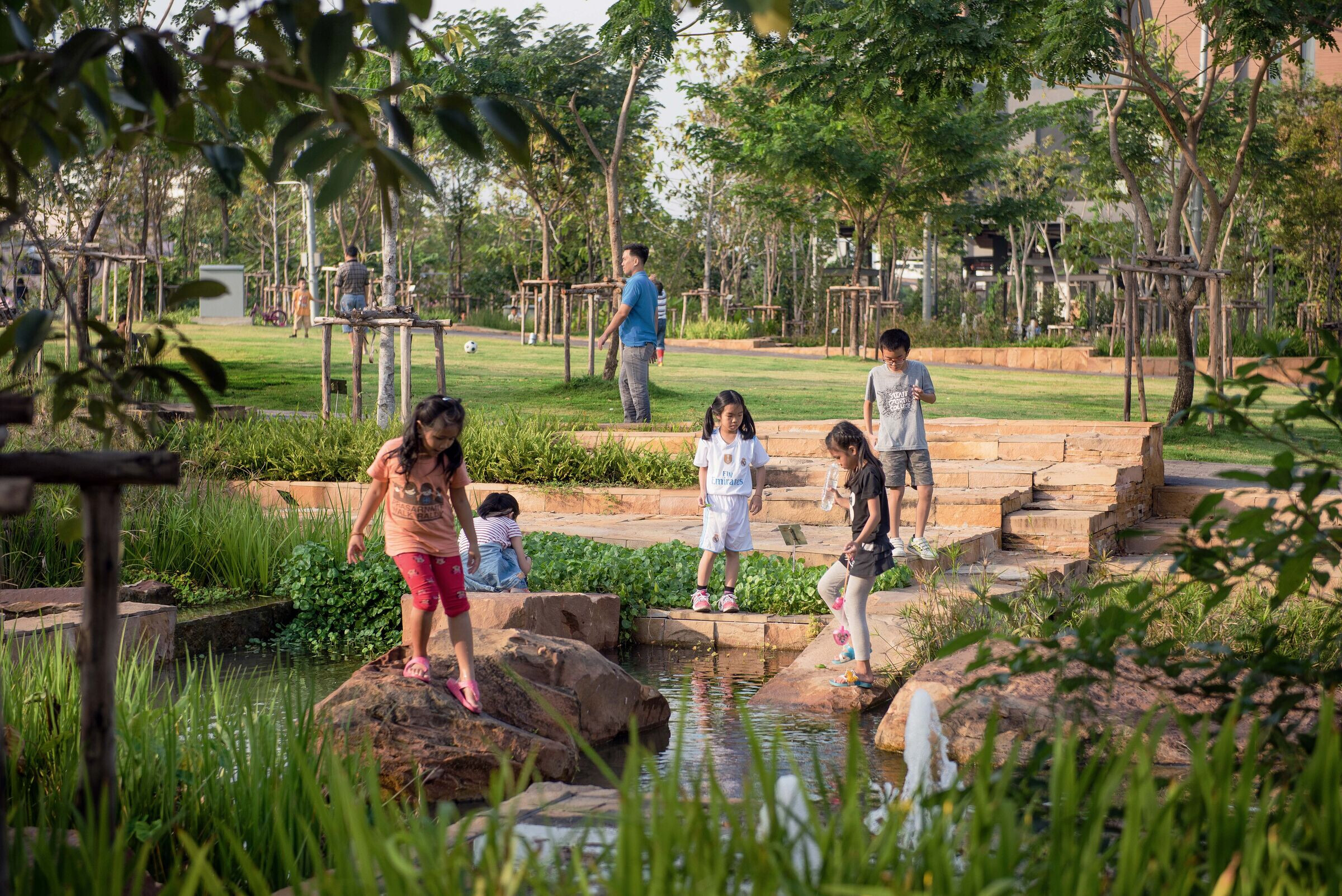
By harnessing the power of gravity, The park is able to collect, treat, and hold runoff. Sitting on a three-degree angle—leaving not a single drop of rain wasted, the park is able to hold up to a million gallons of water during heavy rainfall.
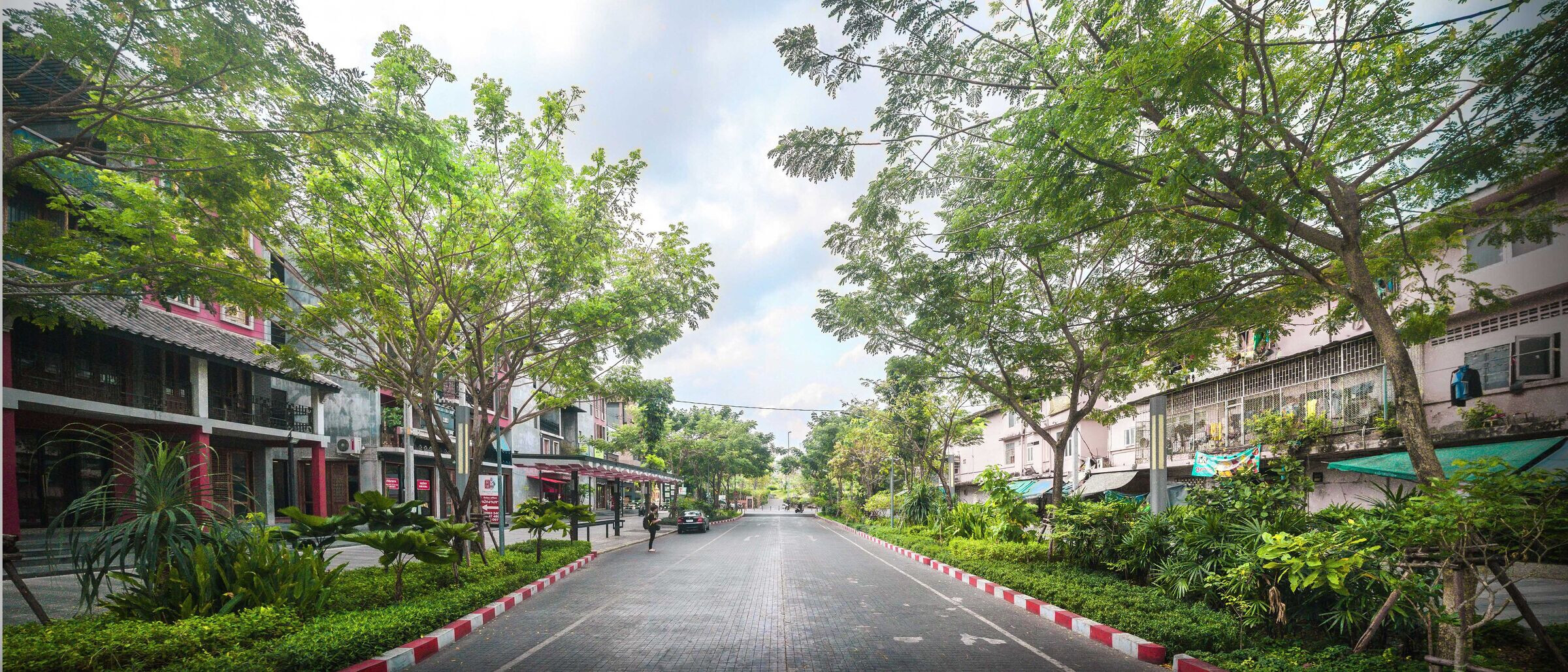
Bangkok is a flat city. By harnessing the power of gravity, the park is able to sustainably collect, treat and hold water to reduce urban flood risks in its surrounding areas. Sitting on a 3-degree gradual incline, the park equipped with several ecological components--consisting of the green roof, wetlands, detention lawns, and retention pond--leaving not a single drop of rain wasted. The rain and runoff are pulled down through the park‘s topography to generate a complete water circulation system. Taking into account a 50-year return period precipitation intensity, during heavy rainfall--oftentimes when the public sewage system is overwhelmed--the park is able to hold up to a million gallons of water.
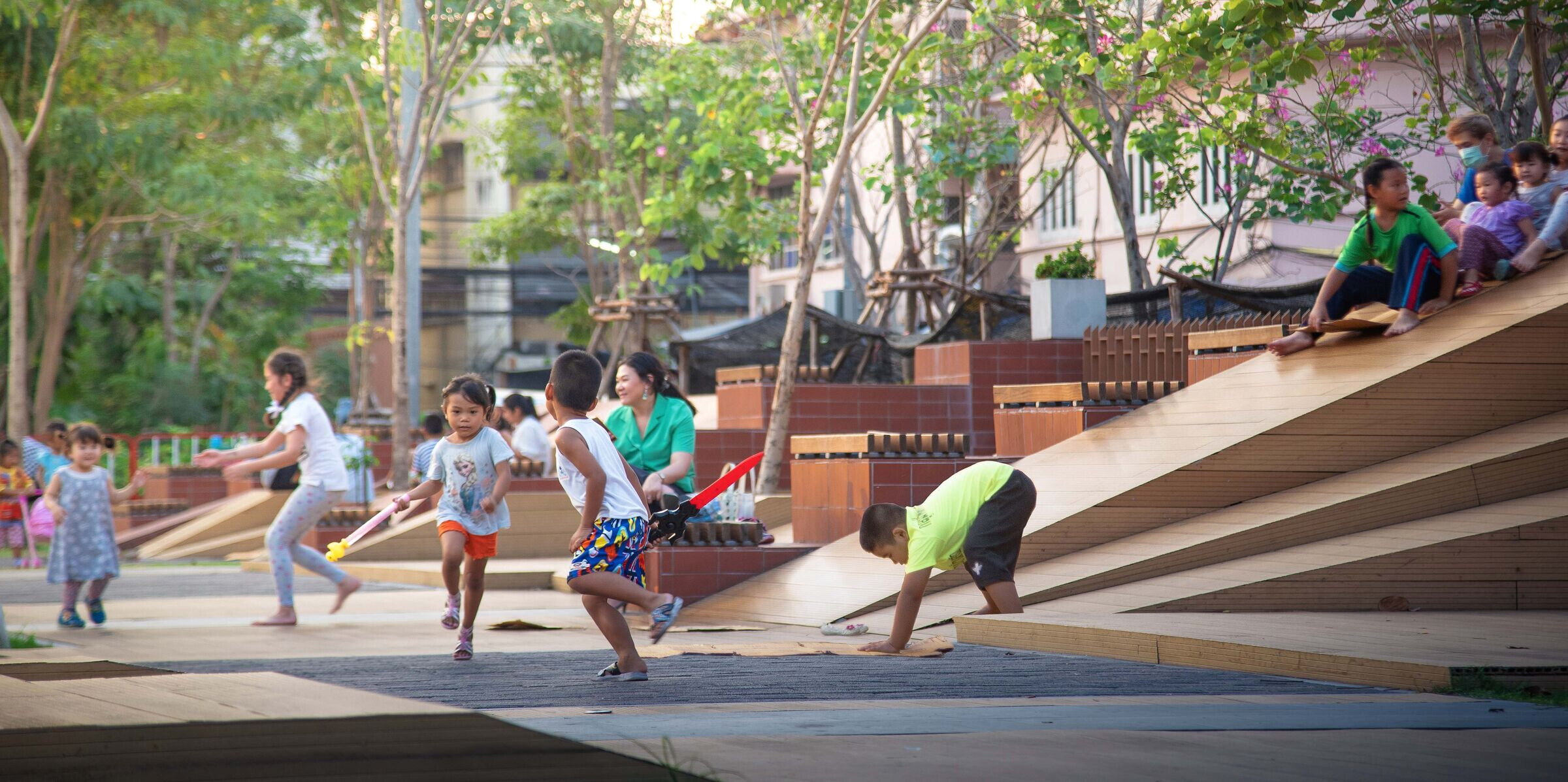
Featuring sustainable drainage systems, a green roof, wetlands, and a retention pond, the park is a example of various landscape solutions for urban flood reduction. The park reminds the city how a park can help city confronts climate change, to live with water, rather than fear it.
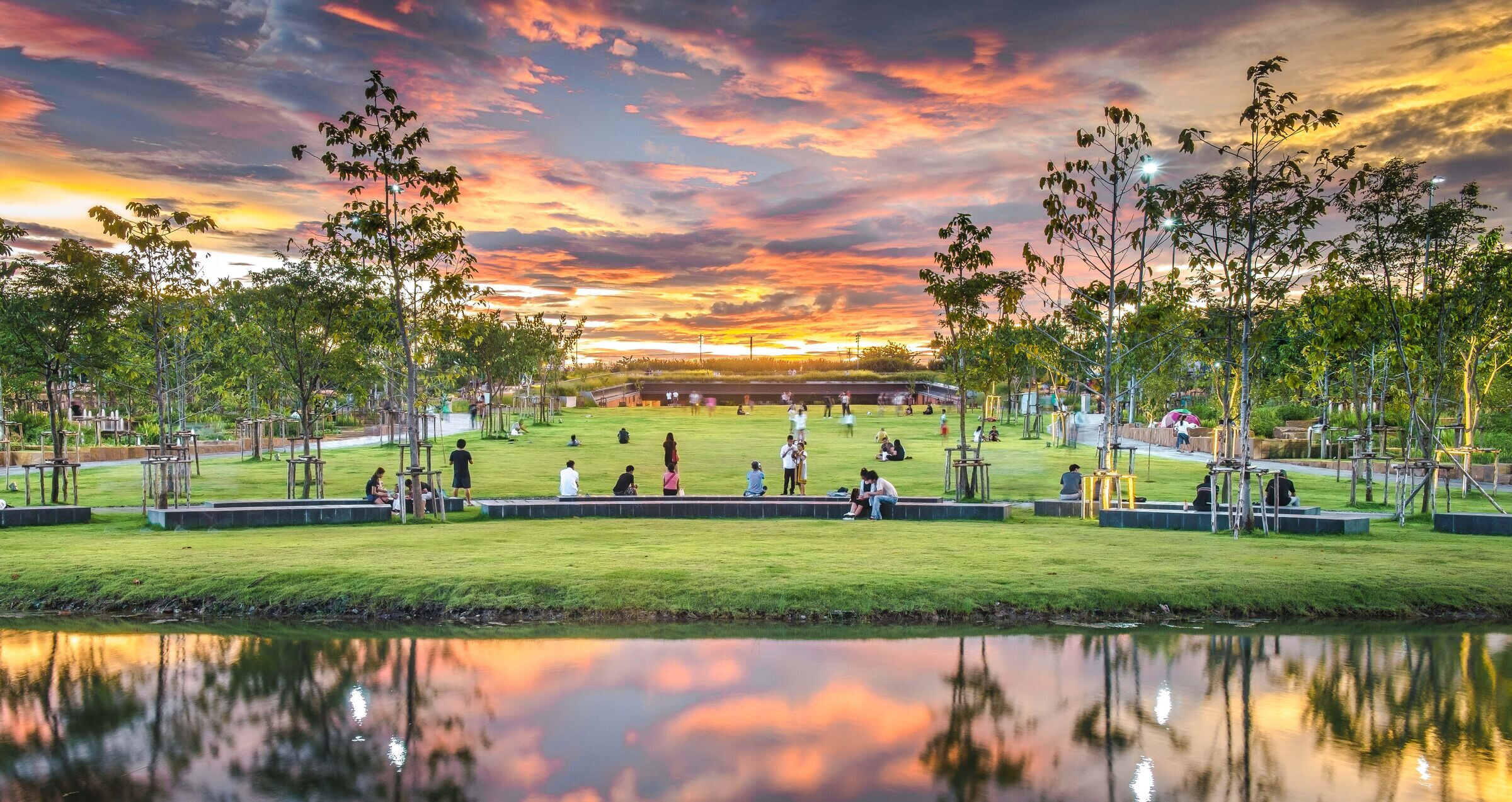
The first of its kind in Bangkok, the 1.3-kilometer road running perpendicular to the park was revamped to shift priority from cars over to foot and bicycles. By reducing four vehicle lanes into two and enlarging them each from 12 to 30 meters, the once heavily-congested street now seamlessly connects pedestrians and cyclists directly to surrounding neighborhoods and roadways linked to the city’s major residential, entertainment and retail facilities. Also lined with corridors of rain gardens on both side to provide shade and reduce runoff from the road surface, the park shows Bangkok the possibility of a pedestrian-friendly, yet commercially-developed area.
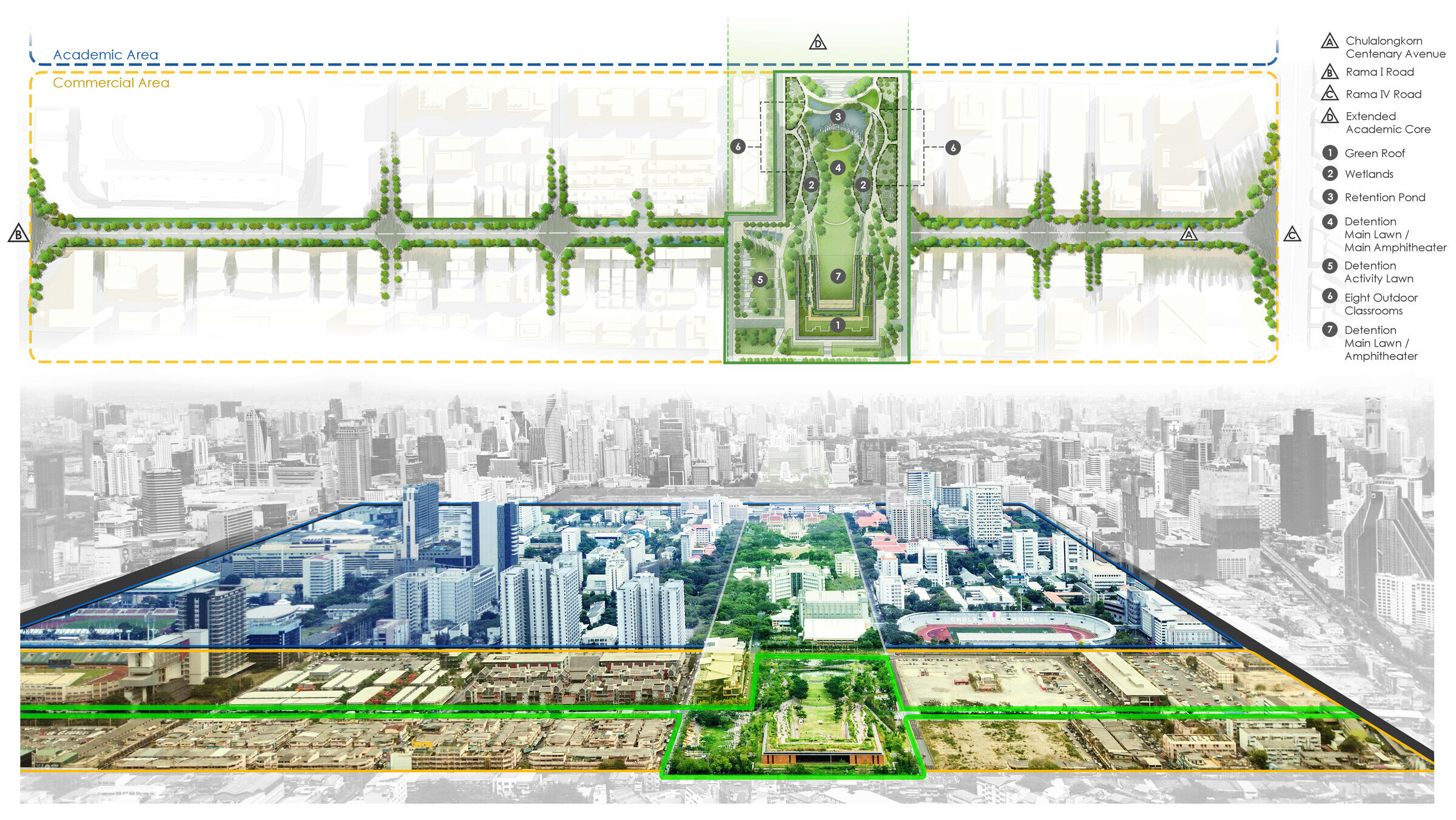
While climate change has been a prominent issue for decades, we are undoubtedly moving towards an age of sustainability and resiliency. A single park can’t control flooding across an entire city, but this is the first step, and a big, bold one. Urban development is nonetheless inevitable and the population is bound to rise, but as landscape architects, it is our obligation to consider every possible solution and sign of hope for our future. The Chulalongkorn Centenary Park gives us a spark of aspiration in how we can choose to handle our threatening future while allowing room for newfound landscape architecture potential to emerge. As new challenges present itself, we can only see new opportunities sprung up for us to make a difference and save our sinking home.
